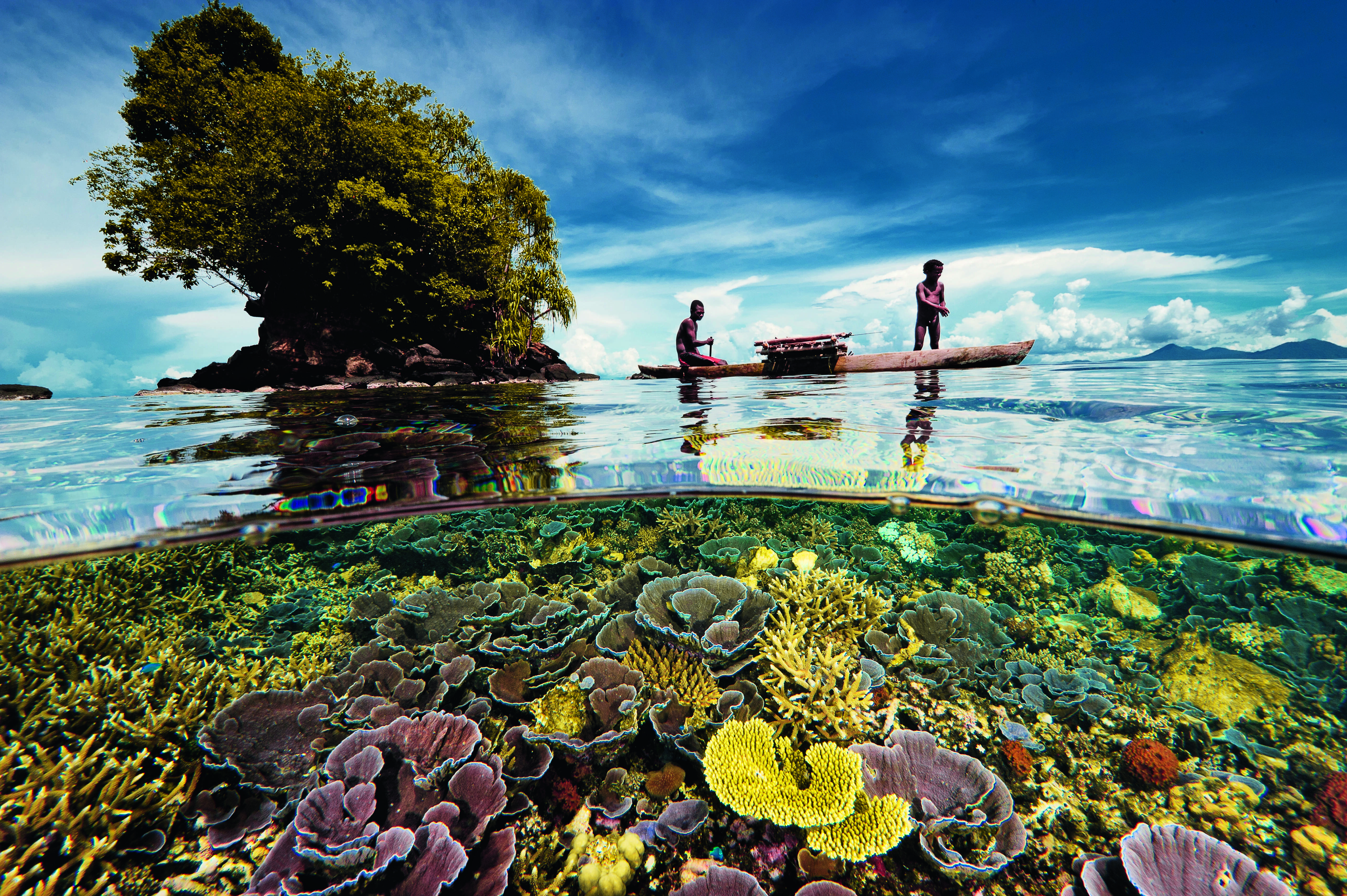
What David Doubilet saw in the Ocean
The brilliant National Geographic photographer captured life perfectly below and above the sea’s surface
To see the seas differently, simply open Ocean. Our new book reproduces 300 carefully chosen images of the marine world, from cave paintings to the latest satellite renderings and, in so doing, demonstrates these contrasts.
Get this book and you’ll better understand the life cycle of the oyster, and the sex life of the Roman god Neptune; you’ll take in Monet’s views of Normandy’s beaches, Van Gogh’s seaside reveries, Damien Hirst’s toothsome shark and David Hockney’s storm over Malibu, and Hokusai’s famous wave, as well as many wondrous records of marine biology.
The American photographer David Doubilet’s work floats somewhere between those exploitative views of sea science, and the more impressionistic, human visions of the seas.
Doubilet began his career in the late 1950s, aged just 12, when he ventured into the Atlantic with his Brownie Hawkeye camera wrapped in a rubber anaesthetist’s bag (the bag was borrowed from the hospital where his father worked).
He went on to specialise in aquatic photography, pioneering split-field imaging, “where elements both above and below the water appear in focus in a single photograph,” explains Ocean.
“Doubilet was on assignment for National Geographic magazine’s 125th anniversary edition when he headed to (Papua New Guineau’s) Kimbe Bay to search for a perfect image that summed up its unique coral-covered seamounts and reef slopes,” explains the book. “When Doubilet failed to get the shot he wanted, an acquaintance suggested that he try a distant island near the Willaumez Peninsula. The riot of corals reaching up to just beneath the surface gave him the underwater scenery he had been seeking – but the father and son paddling silently past in their outrigger was pure luck.
"There are many elements required to create a picture like this. The special front port for the underwater camera is a large-diameter curved dome of glass, optically corrected so that subjects above and below water are both in focus. The camera lens also needs to be super-wide angle to capture the full scope of the scene. Ideally the sea is calm, so there is a clean line of demarcation between sky and water. But here the water line is very slightly curved, giving the subtle impression that the coral reef is a different planet from what is above. The light above water may be in balance with the light below, but we are in no doubt that we’re looking at two worlds,” the book concludes. “It's a paradise of our imagination.”

Ocean
To see more of Doubilet’s work, take a look at this book; for more marine marvels order Ocean here.